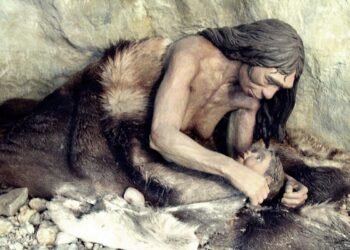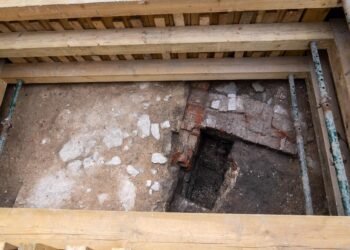Around 10,000 years ago, human groups experienced one of the most important changes in the history of humanity: the shift from gathering and hunting to farming. The transition, typically known as the Neolithic Revolution, began in the Fertile Crescent in the Middle East and later spread to Europe. Archaeologists and geneticists have debated for decades whether the expansion of farming was due to early farmers’ migration or to local hunter-gatherers adopting agricultural practices.

A new interdisciplinary study by Penn State researchers, published in Nature Communications, provides the most definitive response to date. Through the combination of ancient DNA analysis, archaeological records, and advanced computer simulations, the scientists established that farming primarily spread through human migration and not just ideas. Cultural adoption played a minimal role.
“Archaeology and genetics offer complementary windows onto this transition,” explained Christian Huber, assistant professor of biology at Penn State and senior author of the research. “Artifacts and isotopes in ancient bones can reveal whether a person relied on domesticated plants or animals, reflecting the adoption of new farming practices. At the same time, DNA preserved in those bones can show where people’s ancestors came from, providing evidence of migration, or the movement of farming populations into new regions.”
They built simulations that modeled population growth, migration, and cultural learning, and compared them with radiocarbon chronologies and DNA data from 618 Neolithic people from around Europe. The results showed that the spread of farming was largely a result of migration. The contribution of cultural diffusion—the transfer of practices without people moving—was extremely small, at around 0.5 percent.

“The assimilation rate, the rate at which hunter-gatherers were grafted into farming communities, was actually very low — only about one in 1,000 farmers converted a hunter-gatherer to farming each year,” Huber explained. “As a result, cultural transmission had almost no effect on how quickly farming spread. Still, even at this low rate, it left a lasting mark on the DNA of Europeans today and introduced useful genetic traits into the growing farming communities.”
Lead author Troy LaPolice, a graduate student at Penn State, emphasized the surprise of these findings. “What we found was surprising: when cultures spread through migration, it is not guaranteed that local ancestry patterns will change, but the spread of farming managed to leave a strong and lasting impact on European ancestry,” he said.

The study also shows just how strict social boundaries were in those times. According to the models, farmers married within their communities, and hunter-gatherers did the same. “Between-group” pairings were rare—less than three percent. The pattern is corroborated by other ancient DNA studies that show that even when farmers and foragers lived side by side for centuries, they remained genetically distinct.
By merging archaeological data with genetic information, the researchers reconstructed how farming spread from the Fertile Crescent to the Balkans and then across Europe. Their study reveals that while ideas can move independently, in the case of early farming, the farmers themselves—carrying crops, animals, and their genes—were responsible for one of the greatest revolutions in human history.























I wonder if anyone has done research on traveller people/romanies/”gypsies” to investigate the extent to which there is cultural and generic mingling between them and the ‘host’ peoples. Could there be parallels to the situation discussed in this article?
This article is really insightful! It’s fascinating how migration shaped the farming practices across Europe. I never thought about it that way before. Can’t wait to see more studies like this!